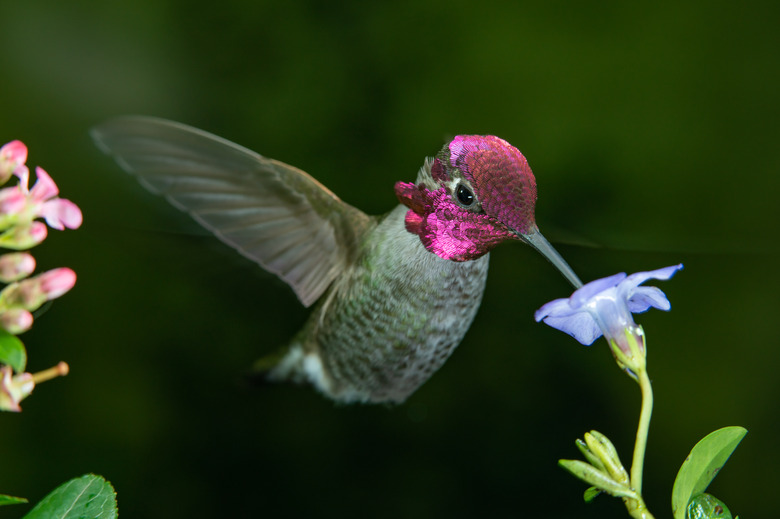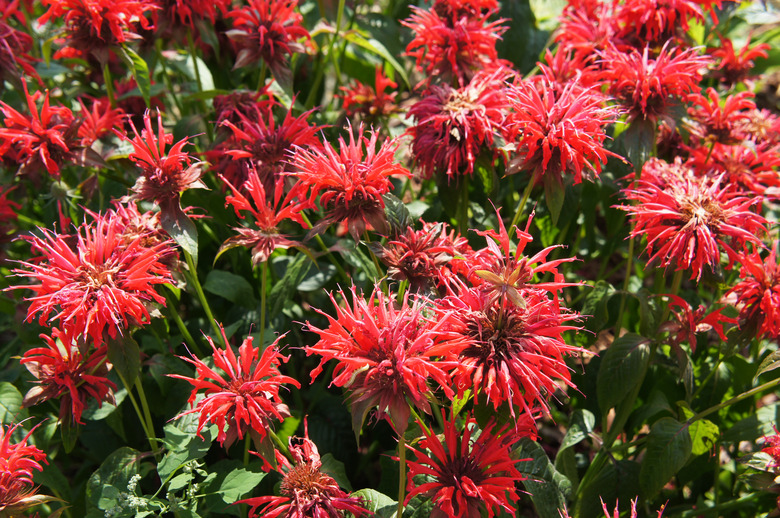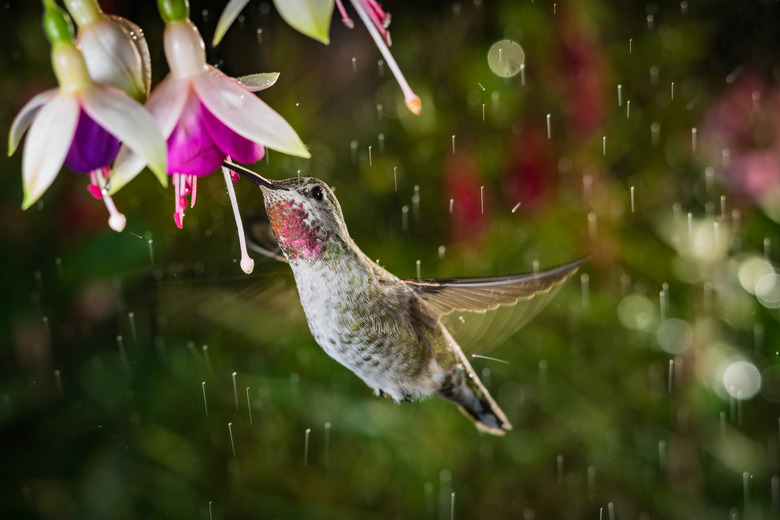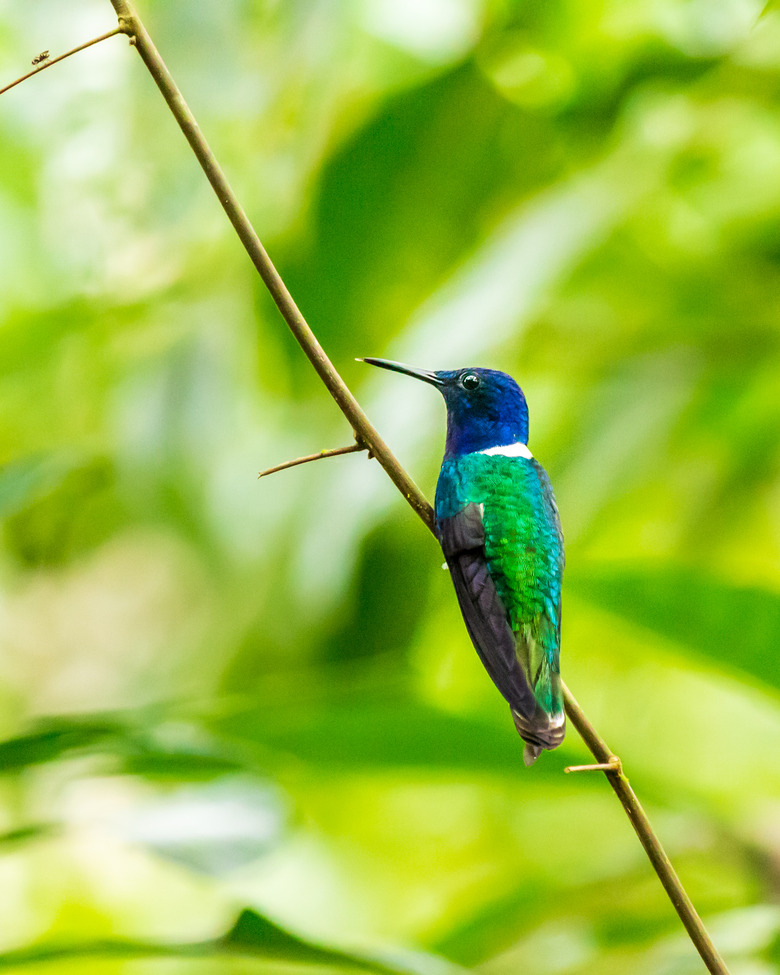Flowers That Attract Hummingbirds
Catching a glimpse of a hummingbird in your yard or garden is a special treat. Like butterflies, these amazing creatures are drawn to some flower varieties more than others. And like butterflies and bees, hummingbirds are an important natural pollinator, transferring pollen from one plant to another to make fruit and seed production possible.
To attract more of these tiny birds to your garden, plant more flowers that are red or orange, or that contain tube-shaped blooms full of nectar.
Nectar Rich Honeysuckle
Nectar Rich Honeysuckle
Honeysuckle, also known as Lonicera, contains a tasty, sweet nectar that fuels hummingbirds. With nearly 180 varieties available, these vines attract hummingbirds, bees and butterflies to garden trellises around the world. The trumpet honeysuckle variety is particularly attractive to hummingbirds, as it has a reddish hue. Plant honeysuckle in an area along a fence or trellis with full sun or partial shade for best results. Select a variety that thrives in your region.
Hummingbirds Love Bee Balm
Hummingbirds Love Bee Balm
Bee balm, also known as wild bergamot or horsemint, is another plant that grows well in various regions of North America. Numerous varieties exist, so it's not difficult to find one native to your area. Hummingbirds particularly like varieties including lemon, spotted or scarlet bee balms. Honey bees also love bee balm, so it's a great plant for a pollinator-friendly yard. Plant bee balm in a herb garden or flower bed to add color. If your property includes a large field or meadow, plant bee balm and let it spread for bursts of color all around. Its leaves are edible and taste like mint.
Sage: For Hummingbirds and Humans
Sage: For Hummingbirds and Humans
The herb sage is another hummingbird-friendly plant that comes in a vast array of varieties. Pineapple sage is particularly interesting to both humans and hummingbirds, as it is unique among sage varieties. It emits a pineapple scent rather than the more familiar sage scent common to dried sage. Its leaves add a refreshing taste to summer cocktails and salads and its lush red flowers are edible, too. Other sage varieties enjoyed by hummingbirds include scarlet sage, pitcher sage, Lemmon's sage, and Gregg sage.
Other Perennials Hummingbirds Like
Other Perennials Hummingbirds Like
Just about any flowering plant that's both vivid and contains nectar is bound to get a visit from hummingbirds. For perennials— plants that come back year after year—opt for columbines, daylilies, or perennial lobelia, also known as cardinal flower. Hummingbirds love varieties of cardinal flower, with their hardy, luscious red blooms that thrive in all sorts of soil. Cardinal flower spikes grow up to two feet tall, so they're great in a garden bed of wildflowers or as a backdrop for shorter flowering plants.
Annuals and Hanging Baskets
Annuals and Hanging Baskets
Hummingbirds also enjoy many annual flowers commonly used in outdoor pots, flower beds and hanging baskets. Colorful petunias, zinnias and impatiens all attract hummingbirds. Honeybees also like zinnias, and butterflies particularly appreciate large zinnia varieties, especially those with easy-to-reach nectar. Snapdragons, which may be annual or perennial, are also hummingbird-friendly. Fuchsia, which can be an annual or perennial, is an excellent hummingbird attractant for a hanging basket. This plant offers an abundance of colorful blooms ranging from pale pinks to deep violets. Hang the baskets on the perimeter of the porch, and near other hummingbird attractants or shelter areas, to enjoy an evening of bird-spotting from the window or from a porch chair.
Important Factors to Consider
Important Factors to Consider
Before planting hummingbird-friendly flowers, remember that your planting practices can help keep the birds healthy, too.
- Do not use pesticides or other potentially harmful chemicals in your yard or garden, as these could harm hummingbirds and other pollinators.
- A few bushes or shrubs nearby provide places for hummingbirds to rest, as they burn a lot of calories flapping their wings. Leave small twigs intact as perches. Hummingbirds may also nest here.
- Hummingbirds also eat protein in the form of insects. Placing a few banana peels outside, away from your home but near hummingbird activity, can draw fruit flies, which serve as hummingbird food.
- Where possible, choose plant varieties that are native to the region, as this provides a more natural ecosystem for hummingbirds and every living thing in your yard.
- Hummingbirds also need water. A shallow birdbath or water feature that mists water is ideal, as the birds can rinse off in the fine spray without soaking themselves. Refill the fountain with fresh water every few days. A standard birdbath may be too deep for a hummingbird.
- Many plants that attract hummingbirds also attract bees. Keep this in mind when choosing plant locations if anyone in your home is afraid of bees or allergic to their stings.
References
- The Old Farmer's Almanac: Plants that Attract Hummingbirds
- ProFlowers: How to Attract Hummingbirds
- Birds and Blooms: Top Ten Vines for Hummingbirds
- Audubon: How to Create a Hummingbird-Friendly Yard
- Bonnie Plants: Growing Pineapple Sage
- North Carolina Audubon: Cardinal Flower: A Hummingbird Magnet
- American Meadows: Planting Zinnias for Butterflies
- P. Allen Smith: Five Plants to Attract Honey Bees



